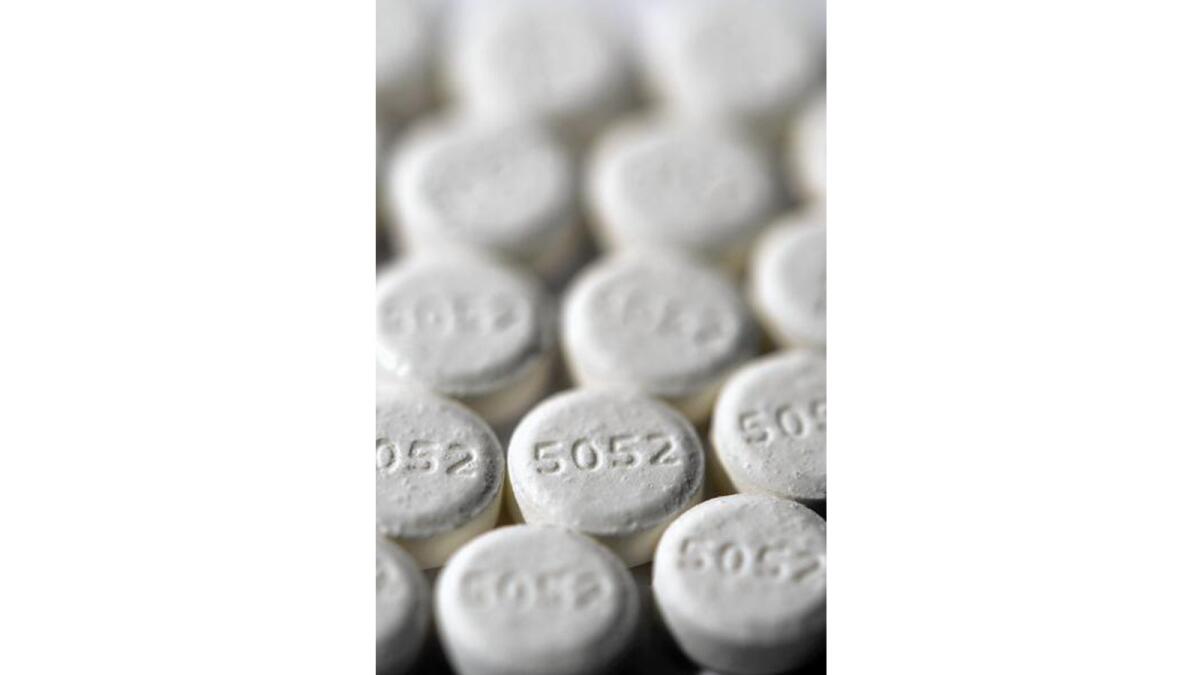How I reduced my prednisone use through diet and exercise

- Share via
When the prednisone my doctor gave me almost miraculously vanquished the paralyzing joint pain I was suffering from, I was hooked.
At first, I didn’t care that I had to take a second drug (alendronate, brand name Fosamax), to slow or prevent osteoporosis, one of the dreaded side effects of prednisone. But I would learn there were other drawbacks.
Prednisone can wreak uncontrollable havoc on one’s central nervous system, leaving some users feeling like a zombie. It can also cause difficulty sleeping, problems focusing, decreased mental acuity, weight gain, lowered sex drive and, not surprisingly as a result of all the above, depression. “High doses for long periods of time can cause muscle weakness, drops in blood sugar levels, higher susceptibility to infection and even cataracts,” explained my Berkeley rheumatologist, Dr. Brian Kaye of the Sutter East Bay Medical Foundation, who was treating me for the autoimmune dysfunction polymyalgia rheumatica.
Some 1 million Americans take prednisone every year, according to the authors of “Coping With Prednisone,” for such diverse conditions as asthma, ulcerative colitis, poison ivy, herniated discs — even for bee stings.
My doctor started me on 20 milligrams of prednisone a day, which he called a “moderate” dosage. (For ulcerative colitis, by comparison, the prescription would have been 60 mg a day.) He also prescribed 70 mg of alendronate once a week to combat the effects of the prednisone, along with 1,500 mg of calcium a day and 2,000 IU (International Units) of vitamin D a day. Then I learned that the alendronate itself has “serious side effects,” including irritation and ulcers of the esophagus, lower calcium levels, jaw bone problems and “unusual thigh bone fractures.”
And that’s when I made it my single-minded mission to reduce and eliminate my prednisone intake as quickly as possible through diet and exercise, and tapering off the drug.
Here’s how I did it — and you can too — if you seek out the right professional guidance:
— My doctor’s goal was to lower my dosage gradually until we found the “tipping point” where 1 mg, or even a half, could make a difference in my pain. Over the course of the first month, he dropped my dosage to 10 mg a day. He then began reducing it by 1 mg every two weeks, and he monitored blood test results for inflammation markers. We were able to reduce my dosage to 3 mg a day, and then eliminate it entirely. And when the pain returns, I can start up again with only 5 mg a day.
— I adopted an anti-inflammatory diet at the suggestion of Iris Gold, my Mill Valley, Calif.,-based acupuncturist and all-around holistic health counselor. This meant eliminating all dairy, sugar and caffeine. Sayonara, morning café Americano, half-and-half and even my beloved packet of Sugar in the Raw unrefined cane morning indulgence. Greetings, decaf black, nothing added. I also gave up citrus and dried fruits, eggs, red meat and red potatoes, peanuts, any processed fried foods, among other foods that trigger inflammation.
She recommended steamed low-carb vegetables, such as asparagus, bean sprouts, broccoli, cabbage and cauliflower. She also encouraged me to include more omega-3 fatty acids — easy since I love salmon, a rich source, along with flaxseed, hemp seeds and walnuts. She also encouraged a high-quality source of turmeric to reduce inflammation. (She likes Kaprex Ai, a natural plant-derived supplement made by Metagenics.)
— For exercise, I turned to movement expert Dan Clurman, certified in the Feldenkrais Method developed in the late 1940s by Israeli physicist and judo expert Moshe Feldenkrais specifically to help people sidestep pain associated with habituated ways of moving. Clurman made it clear he could not “fix” me but that I could avoid exacerbating my joint pain by adapting what he called “a more elegant and efficient distribution of chores,” so that my “body parts could work together as a team.”
So, for example, he showed me how to get out of bed each morning, gently thrusting my right leg out and letting gravity and my momentum help me roll forward and sideways off the left side of the bed. That made it so much less painful than using my arm and shoulder to push up. Also, rather than painfully reaching across my body to grab the car safety belt once seated, now I first sit down at a full 90-degree angle away from the front of the car. I then take the safety belt in my right hand and turn toward the steering wheel before latching it and then closing the door.
All combined, these subtle adjustments make a world of difference, for which my aching joints have shown great appreciation.
No additional prednisone needed.
ALSO
Sure, essential oils smell great. But are they good for anything else?
Want to lose weight in 2016? Experts say start right now
Medical professionals disagree about new hangover remedies




